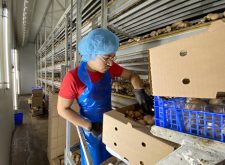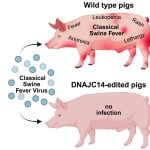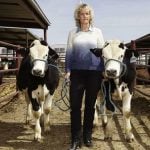Farmers trying to grow a direct-sale food business from the farmers’ market or roadside stand to a retail level face an imposing regulatory system. Navigating this system without help can levy artificial limits on the market potential of unique farm-sourced products.
There are resources to help manage these regulatory growing pains, however.
Ontario’s Agri-Food Management Institute (AMI) published The Food Entrepreneur’s Journey to help new food-industry entrepreneurs, such as farmers trying to market their products to stores and restaurants, successfully navigate and anticipate regulations as they grow.
Read Also

Packer buys Green Giant, Le Sieur veg brands from U.S. owner
A Quebec-based processor’s deal to buy the Green Giant and Le Sieur packaged and frozen vegetable brands in Canada from a U.S. owner clarifies the status of two popular retail brands grown by Canadian farmers.
Why it matters: Regulatory systems are notoriously complex and the best resource an entrepreneur can access is their own network of business peers. The guide is designed to help business owners know what questions to ask those peers.
The guide was created and developed using information from a recent Agri-Food Management Institute report on the barriers to scaling-up production for food processors. Additional information was gathered through interviews and input from 12 entrepreneurs and small business owners, as well as other food industry professionals.
Ashley Honsberger, executive director for the Agri-food Management Institute, describes the guide as “an easy-to-read resource,” though she emphasizes it’s more like a lesson manual than a direct how-to guide.
“Something like [a how-to guide] simply doesn’t exist. We hope readers can learn from others who have been through the process before them,” she says.
Al Brezina, a project editor and food-processing-industry consultant, says the guide stresses the importance of understanding growth in terms of different stages.
“The Food Entrepreneur’s Journey takes the prospective food entrepreneur through those stages and helps them think through what they need to consider,” he says. “It’s important to follow this path to improve their chances of success and avoid the pitfalls or serious complications later.”
Anticipating setbacks
Two notable themes within the guide focus specifically on managing, or coping with, regulatory complexity and anticipating facility issues.
Brezina says the guide encourages entrepreneurs to seek help in their particular area of business. Different types of food processing bring different regulations, after all, meaning more customized advice can better prepare new businesses to manage those regulations.
When it comes to facility issues, he says the resource contextualizes the physical requirements of scaling up production, including how production regulations and demands change from small-scale, farmers’-market-type environments to the retail world.
“Many people start making a product at home,” says Brezina, “but scaling up means making the product in a food-grade facility such as a commercial kitchen or a food incubator,” which are shared, rented spaces that can include on-hand experts to help in production.
“Whether there is a facility available is another thing to consider,” he says.
Brezina also reiterates the guide should spur entrepreneurs to continue investigating the marketability of a product, and in particular, how it can be produced and sold at a price the public is willing to pay.
Other considerations, such as whether a new prototype is needed for the production line and whether one can access professional expertise in developing that prototype, are available throughout.
A reminder to network
Brezina and Honsberger both say The Food Entrepreneur’s Journey is intended to reflect the diversity of Ontario’s (and Canada’s) food industry. It should prompt entrepreneurs to ask the right questions, and to network, even though the network might contain competitors.
“Generally speaking, most people are willing to help, though it may not initially appear that way,” says Brezina. “The guide helps [businesses] prepare, but you really need to make contacts.”
The Food Entrepreneur’s Journey is available for free online.













